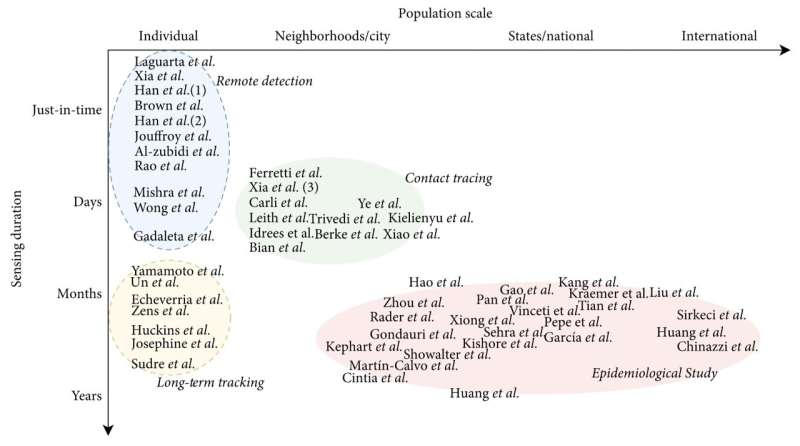A review of mobile sensing in the COVID-19 era

Mobile sensing has shown its power in the pervasive and effective monitoring of COVID-19 in varying population scales and time duration, according to a study published in Health Data Science.
Behind this work are the researchers at the Sensing System for Health Lab led by Dr. Laura Barnes at the University of Virginia. They have been working on promoting health and well-being using mobile sensing and data analytics techniques.
Mobile sensing, a digital surveillance tool, leverages embedded sensors in mobile devices such as smartphones and wearables. As mobile sensing has become a promising way to monitor the trajectories of the pandemic by collecting the data on individual, community, and global scales, this paper investigated the study designs, expected health outcomes, and existing limitations of such mobile-based human-subject work to guide future practice. As such, this paper stands out among a panoply of articles on the use of mobile devices for COVID-19 response.
“We reviewed existing work’s 1) aims and designs, 2) sensing duration and population coverage, 3) outcomes and limitations, to better taxonomize and understand this topic,” says Zhiyuan Wang, Ph.D. student with Sensing Systems for Health Lab.
“Existing work has demonstrated the capacity of mobile sensing to not only 1) remotely detect infectious status, but to also 2) longitudinally track disease progression for personalized medicine, 3) to passively trace exposures and 4) broadly observe the influence of the pandemic on population health,” shares Professor Laura Barnes, the lab director.
However, technical and societal limitations still exist, including data availability and system adoption challenges, clinical and application issues, and privacy and ethical concerns. These limitations have hindered further actions of computer scientists, clinicians, and epidemiologists in leveraging mobile sensing for human health.
Current or emerging technologies may provide a solution to these constraints. For example, advances in data analytics and machine learning methods may help improve data quality because of their ability to process sparse, heterogenous and multimodal mobile sensing data streams. Also, mobile sensing at even larger scales, particularly in clinical settings, could be carried out leveraging the next generation of sensors and sensing platforms.
Other stakeholders can also make an impact on how mobile sensing can yield clinical and social benefits. Such efforts can include mitigating potential threats to privacy, equity and health disparities; promoting technological and health literacy in all communities; and making trust-based and shared decisions that properly balance risks and benefits.
Source: Read Full Article
